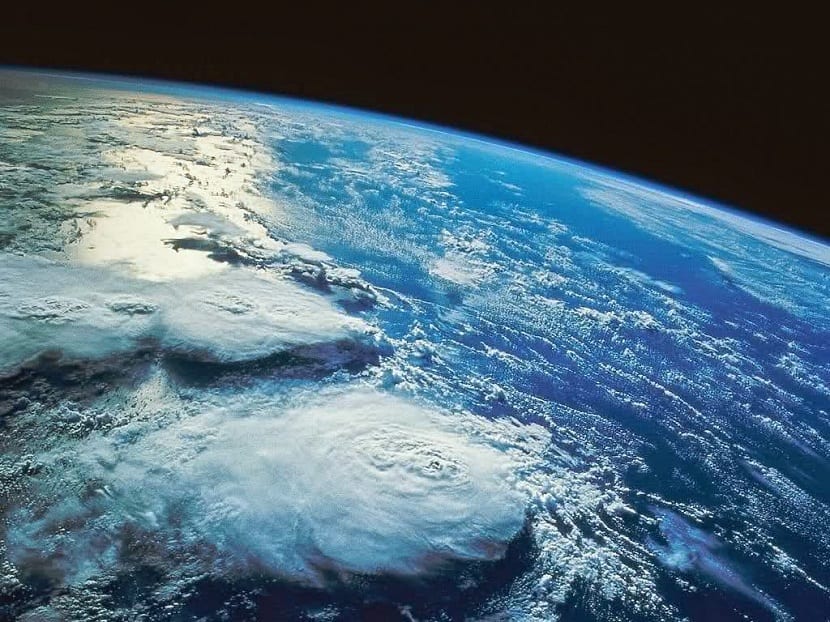
We have to know that water is a very precious and necessary resource in our lives. The specialists, the scientists and the whole world know it. We need water to live. This is because we not only use it in our homes to drink, shower and cook, but it is essential for agriculture, livestock and industry. Having quality water is important for both society and the environment. Therefore, the set of all the water on our planet is known as hydrosphere. This hydrosphere collects water in all its states: solid, liquid and vapor.
In this article we are going to delve into the hydrosphere and the importance it has for the planet.
What is the hydrosphere
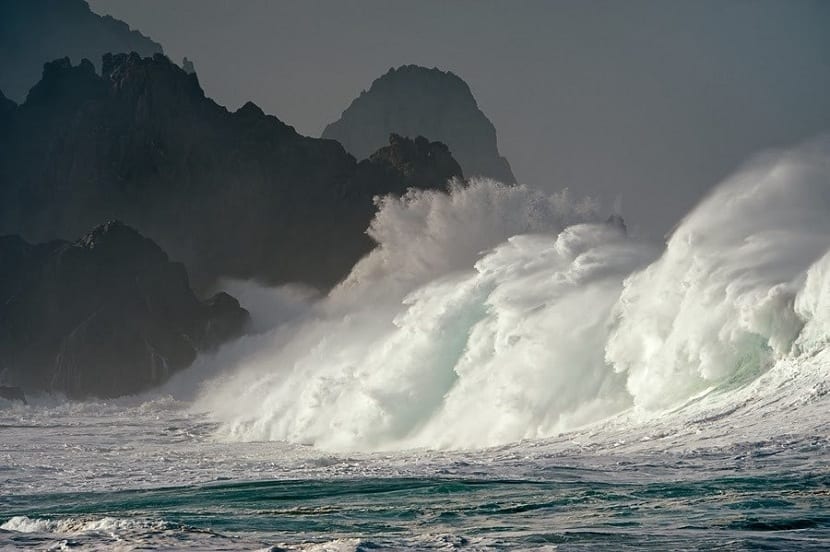
The hydrosphere is the part of the biosphere that contains the water on our planet. It includes water in all its states and both surface and groundwater. The ice that accumulates on the polar ice caps, in mountain ranges and all the water that circulates both in the atmosphere and in rivers, lakes and seas are also part of the hydrosphere.
The hydrosphere has important characteristics that we can summarize as:
- Presence in the constant transformation of physical-chemical properties. For example, many of the rocks are dissolved with rainwater and give rise to incredible formations such as stalactites and stalagmites.
- It interacts constantly with the Earth crust and modifies the structure. This crust is not always fixed, but it is modified over the years.
- It is a fundamental part of the vast majority of ecosystems around the world. Both in terrestrial and marine ecosystems.
- Water is an essential element for the formation of life as we know it today.
- Only a small percentage of all the water available in the world is fit for human consumption and other species. However, that small percentage supports everyone.
Origin of the hydrosphere
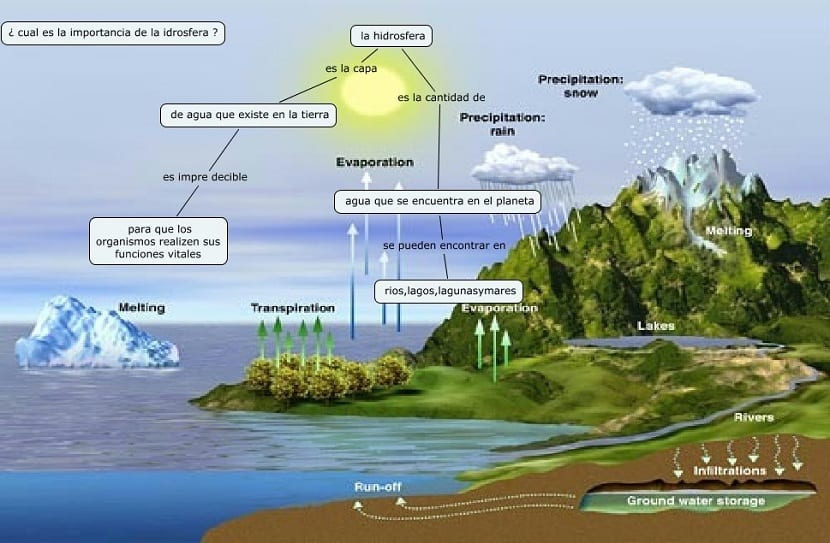
During the formation of terrestrial materials, water was in liquid and gas form. The water that was on our planet, at the beginning of everything, was just steam. This is due to the high temperatures that reigned our planet, being so hot. That incandescent ball of fire that was the Earth at the beginning of everything made that the water could not be in another state more than in steam.
It was later, when our planet began to cool, that it could be converted to a liquid state, giving rise to the seas and oceans of the entire world. It also froze, forming glaciers and polar ice caps. Some of that water remained in the atmosphere as water vapor and gave rise to the formation of clouds.
This is how the first water deposits were formed. However, we know that water has not remained constant throughout the history of the earth. On the one hand, being in constant circulation and transformation, we can say that it is in the water cycle. Due to the different changes that have occurred in the climate over the years, the proportions of ice, liquid water and vapor have also been modified. This has led to the characteristics of the terrain having also changed over the years.
The surface area occupied by water also varies depending on the dynamics of the land. Beyond the physical-chemical and geological transformations that water can have, living organisms have also meant a great transformation for the hydrosphere. The contribution of organic matter and the transformation of its physical characteristics has made the water change as well. The action of the human being is the one that has most altered the water cycle, because it has caused changes in its channeling, purification, pollution and changes in its physical state due to the increase in temperatures caused by global warming.
Since the water condensed due to the cooling of the planet, it has been modifying and transforming with the passage of time.
Composition:
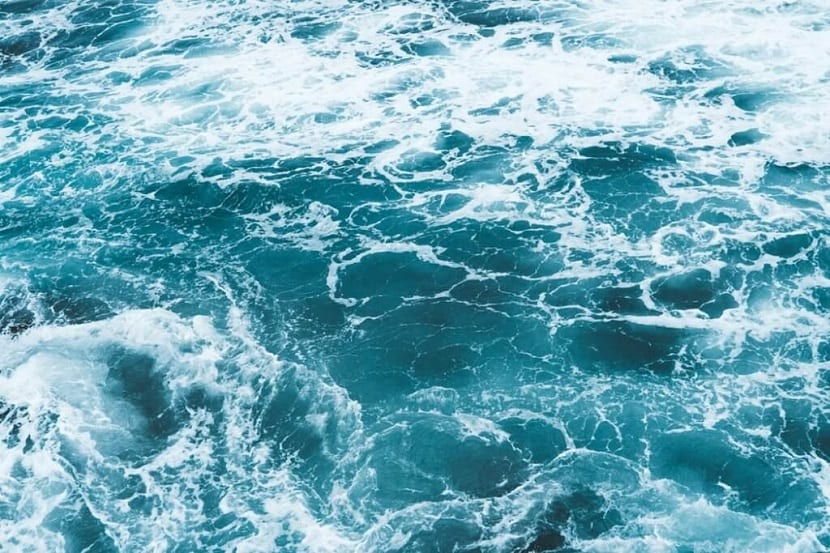
We are going to analyze the composition of the hydrosphere step by step:
- Solid water. This portion of the planet's water is the one that contains the water at the poles, snows and alpine glaciers. Floating ice surfaces are known as "ice floes." The whole set of solid-state water is known as the cryosphere.
- Water in a liquid state. This water is what makes up lakes, ponds, rivers, seas, oceans, piped water, runoff, and groundwater. In the seas and oceans we find seas and oceans. There is also a very small percentage of water within living things.
- Water in a gaseous state. It is the water in a state of vapor that is in the atmosphere. It has a certain composition and volume depending on the location and time of year in which we are.
Distribution of water throughout the Earth
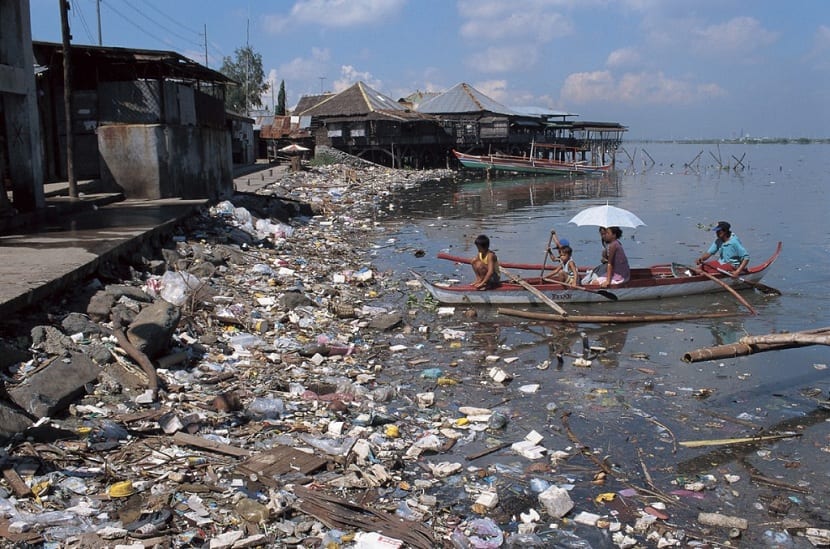
To get an idea, the hydrosphere is made up of 1,4 trillion km3 of water. This amount of water is distributed in the following way:
- 97% in seas and oceans.
- 2.5% in the form of fresh water.
- The remaining 0.5% is distributed among the rest of the locations.
One of the main problems we have today is given by water pollution by humans. With our economic activities we are degrading and lowering the level of the waters in good condition. Needless to say, pristine waters hardly exist anywhere in the world anymore. We pollute and degrade the water we need to live.
Luckily, we have the capacity to regenerate the waters and reduce pollution. We can also desalinate the water from seas and oceans to make it drinkable. The problem with all this is that a huge energy expenditure and more pollution are derived on the other hand. We must become aware of how important water is for humans and life on the planet.
I hope that with this information you can learn more about the hydrosphere and its characteristics.